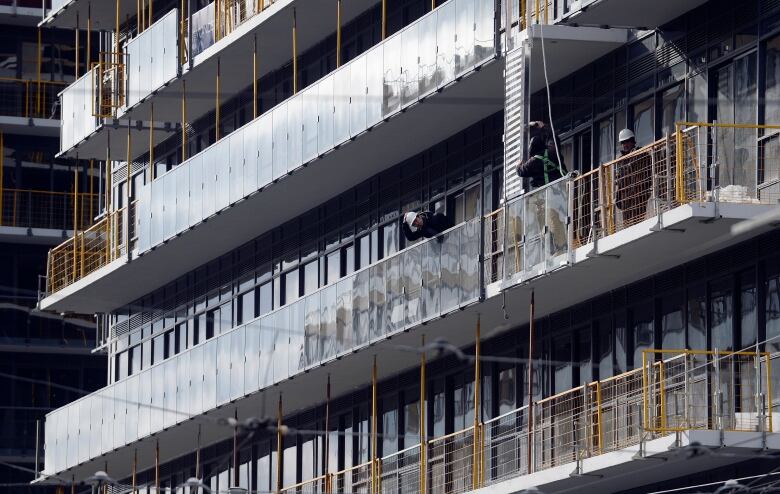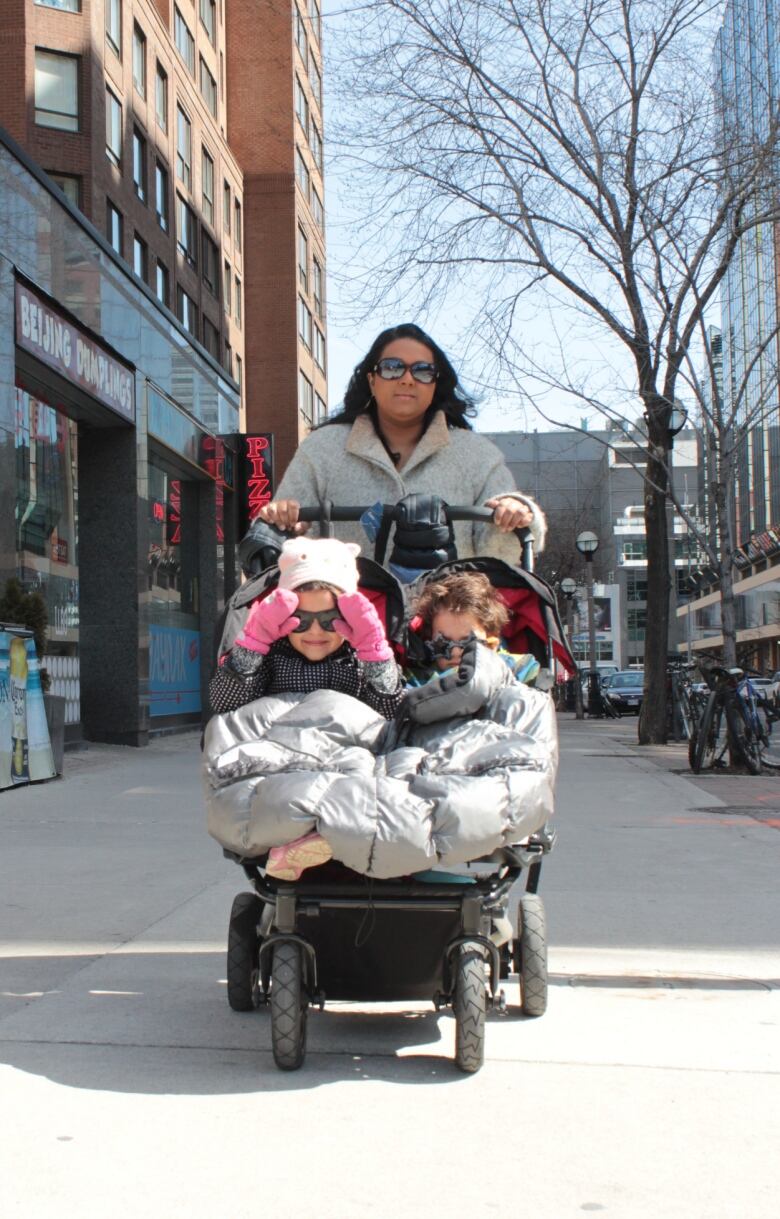Growing upwards: Why Toronto wants to make high-rises family-friendly
Between high housing prices and limited real estate supply, the city is looking skywards for growth

John Preece and Amelia Bowler chose to abandon the idea of a backyard and white picket fence in Toronto and trade it in for time spent with their children.
That meant buying a two-bedroom condo in 2012, a growing trend for middle-class parents as they getpriced out of Toronto's scorchingmarket for single-family homes.
"We have so little time to spend with the family as it is because we both work fulltime," said Preece, now a father of two. "We just could not justify spending all that time commuting just to have a yard or a slightly bigger space."
That40-minute desk-to-door commute from Flemingdon Parkmeantthat Preece couldtake his kids to the local park after work, getting in a session at the sandboxbefore the sun sets.
Growing upwards
The little family isamong the one-third of Toronto parents raising young children in a condo or apartment.
And they also represent a portraitof the futureas thecity preparesto, quite literally, look skywards when it comes to urban growth. It launched the study Growing Up this spring to hear from families about their needs when living in high- and mid-rise buildings.

Much of the input from familieshas been divided between the size and layouts of the units and what's available in the city's neighbourhoods, Nasr said. The city will also examine how the addition ofparks, schools and community centres can support wee ones growing up in a sea of glass and concrete.
That report won't go to council until early 2017,Nasr said. But she says it will likely revisit a policy shelved by the planning and growth committee five years ago.
At thattime, a four-year study found a dearth ofthree-bedroom units on the market. Staff recommended the city require developers to include those family-sized units in any new buildings, but the suggestion was put on hold.
Nasr couldn't say how much space might need to be set asidefor two- or three-bedroom condos in future developments, saying only that staff need to examine what the market will bear.
Marketing to families
That type of regulation has not been popular with developers in the past.
Those in the industryreportedhaving troubleselling, and making the sameprofit margin ontheir larger units, according to a 2014 report on condos commissioned by the city.
Tridel'ssenior vicepresident, however, said that he's seen a shift in market demand in the last five years.
- High house prices making home ownership an unaffordable dream in Toronto and Vancouver
- Real estate 'chaos' has millenials scrambling to buy while they still can
"I don't think the industry would be at odds with where the city might want to go," JimRitchiesaid in a recent interview. "Everything that we have on the drawing board right now, there are more two bedrooms and the three bedroom units are there."
On average, he said Tridel nowdedicates about 10 per cent of new buildings to three-bedroom units. Roughly 40 per cent gets set aside fortwo-bedroom condos, although he said a neighbourhood's demographics influence those decisions.
That's a major spike from 2001 to 2011, when fewer than one per cent of new condos coming on to the market hadthree bedrooms.
But Ritchie said they're selling.

Considering the average price of a semi-detached home in "the 416" hit $912,724 this June a jump of more than $150,000 in a year, according to the Toronto Real Estate Board it makes sensethatmiddle-class families arelooking for alternatives, urban planning professor Matti Siemiatycki said.
"Thosetrends are creating a situation where you're not just building homes, you're building communities," the University of Toronto professorsaid. "And it's in a building form that we haven't always seen as being accommodating to families with children."
That's where the city most needs to step in, he said.
City becomes 'your living room'
Parks, daycares, schools, and transit hubs need to be developed in tandem with any high-rise homes, Siemiatycki said. The city can leverage itsSection 37 funds, which developers pay in order to gain extra height for their buildings, in the areas of highest density, he said.It's something that's already started to happen around Fort York, which became home to a new library at the foot of Bathurst Street and Canoe Landing Park.
"The city can really be your livingroom," Siemiatyckisaid. "The tradeoff of living in a smaller unit might be that you're in a neighbourhood that's accommodating and really a bright place for families and children."

Yashy and Chris Murphy bought into that idea. The couple have stayed in their1,000-square foot condo at Bay and Dundas streets, even as its occupantsgrew from two to four.
"Sure, there's a stroller in the living room, but we love this lifestyle and we don't want to move to the suburbs," Yashy Murphysaid. "At the drop of a hat, we can go to the AGO, we can go to a movie or to a restaurant."
The only question is what to do as the kids get older, she said. She grew up in Dubai among its ocean of high-rise buildings where it was perfectly normal to share a bedroom withher brother into her teens.
Her husband, however, feels differently. He wants more room for his family.
"It's an ongoing negotiation," she said,laughing. Thankfully they have a bit of time to make that decision and by then, she says, there may be more three-bedroom units on the market.












_(720p).jpg)


 OFFICIAL HD MUSIC VIDEO.jpg)
.jpg)



























































































